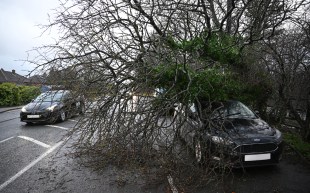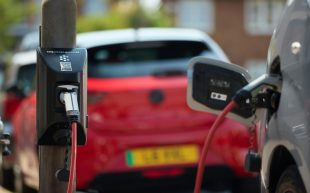What should you do if you record a car crash on your dash cam?
Do you have to hand over the footage to police?
IF YOU drive a car, sooner or later you’re bound to witness an accident. If you’re involved in the crash, you should know the basics: stop and exchange details with the third party. We’ve provided a full “what to do” for that scenario at the bottom of this page.
But what if you weren’t involved in the accident yourself, but instead witnessed two or more other cars dinging each other?
And what if you managed to capture it on a dashboard camera (dash cam) or other video recording device? Are you required to stop and offer the footage to those involved, as evidence in the insurance claim or – if it’s a significant accident – police investigation?
Browse NEW or USED cars for sale
It happened to us
What to do after recording an accident came to our attention after we caught one on video. While waiting at a T-junction, a car travelling along the major road was clipped by a van that was pulling out from the other side of the road, across the on-coming traffic (which was queuing at the time). You can see the footage above.
It wasn’t a big accident – no one was hurt – and both vehicles plus a witness pulled over, so we continued on our journey. But had we done the wrong thing? Were we required to stop or report the incident? We asked the experts.
The driving expert says…
“If it’s just a ding, you’re not required to stop if you weren’t involved,” says Tim Shallcross, head of technical policy at the Institute of Advanced Motorists, and a former AA patrol instructor. “If it’s something where you feel you could help as a witness, then it’s good manners to stop, if it’s safe. But it depends on the nature of the ding; if somebody went into the back of somebody else and it’s pretty obvious they’re getting out and exchanging details, don’t worry too much about it.
“If you have a recurrent feeling of guilt and you’re going to lose sleep over it, what you could do is report it to the police, giving the date and the time, which is recorded on a lot of dash cams these days, anyway, and say that if anyone does require footage, you have it.
“In your case, you can’t see the number plates but the local police will find the date, time and location useful in case it’s reported by those involved.”
The dash cam manufacturer says…
“It’s a close call,” comments Richard Browning, director at Nextbase. “This clearly highlights the dangers of pulling out between traffic and it’s the kind of thing that many of us see all too often. Though this particular case isn’t exactly one of ‘dangerous driving’, there’s no denying that it could have ended differently.
“Dash cams are used by so many motorists as an independent witness, their main function being to protect the driver. However they can also help in cases where a motorist has been a witness to an incident on the roads.
“If this example did feature dangerous driving or a dispute then the insurers and police would have been able to prove what happened and process incident quickly, which is beneficial to all drivers.”
How can you submit car crash footage to police?
With more dash cams being fitted to cars, the chances of accidents being recorded is greatly increasing. The problem, though, is making that footage available to those involved and the authorities.
Some police forces have set up systems for drivers to share footage with them – police forces across Wales introduced Operation Snap last year, enabling drivers to enter accident details and share supporting footage via a website.
But it’s not so easy for drivers in other areas of the UK; most don’t have such a website, so footage must be sent by other means. That’s assuming the local force has the means and resources to investigate the footage at all.
Shallcross told us: “They’re changing things so that it’s easier to share accident details with police, either over the phone or the Internet, but the proposal is to leave it up to individual forces to do, which will be a complete and utter mess. If I’m in Norfolk, I’ve got to ring them up; if I’m Suffolk I’ve got to do it over the Internet; if I’m in London, I’ve got to go in, in person. So no one will know what to do and nobody knows what jurisdiction they’re in, anyway.
“In due course there may be an official website; hopefully a national one.”
Nextbase may get this idea sorted before the police, it seems. Browning told us:
“Using the Nextbase app or computer software you can easily share footage if you are a witness to an incident, but the only issue here lies in getting that footage in front of the police, which can prove to be very difficult. However, Nextbase is currently in discussions with the police about streamlining this process, so watch this space.”
Browse NEW or USED cars for sale
What to do if you’re involved in a car accident or crash
- Stop the car as soon as possible – it’s an offence not to do so
- Turn off the engine
- Switch on your hazard lights
- Check for any injuries to yourself or your passengers
- If anyone is hurt: call the police and an ambulance immediately
- If there are no injuries: make a note of it anyway; the third party or parties may later try to claim for injury compensation
- Try to remain calm – going into shock is common, so take a few deep breaths and .
- Never lose your temper, even if the third party was reckless and at fault – it won’t help the situation and may count against you
- Don’t apologise or admit liability for the accident – you may realise something later that suggests otherwise
- Call the police if…
- the other driver or drivers leave the scene without giving details
- you think the other driver has no insurance
- is under the influence of drink or drugs
- you suspect that the other driver caused the collision deliberately
- Exchange details
- Registration plates*
- The trailer number, if any of the vehicles was a lorry
- Full names and addresses of drivers*, and of everyone involved, if the accident caused damage or injury
- Ask if the other driver(s) is the registered keeper of the car; if not, who is (it may be a company rather than a person)?
- Insurance company names
- If you crashed into property, like a parked car or a wall, leave your details somewhere the owner can find them. You really don’t want to be caught on CCTV or a third party’s video camera fleeing the scene without doing so.
- Gather evidence
- Sketch the scene, with position of vehicles, road layout, street names, etc.
- Note down damage to all cars involved – you could use the terms “driver side” and “passenger side” but due to the existence of both left- and right-hand drive cars, the technical terms are “nearside” and “offside”; the sides closest to and furthest from the kerb as you drive, respectively.
- Time and date
- Visibility (was it dark, foggy, etc.)
- Weather conditions
- Road quality
- Make, model, colour and registration plates of cars involved
- Names and contact details of witnesses
- Take photographs (and maybe video) of the scene
- You could ask permission to record any conversations
- Even if you don’t want to make a claim (to protect a no-claims discount, for example), call your insurer, ideally from the scene of the accident. This is because the third party may try to make a claim without your knowledge, and you want your insurer to know your side of the story.
* It’s an offence not to share this information
What is ‘crash-for-cash’?
Be aware that some people arrange accidents in order to make a fraudulent insurance claim. These are common ploys:
- Braking unexpectedly, and often on a clear road, causing you to go into the back of their car
- Flashing their lights to indicate you’re free to go before purposely crashing into you
- Removing brake light bulbs, giving you no warning when they hit the brakes in front of you
- Working in tandem with another car to box you in, intimidate or distract you
The crash-for-cash fraudster will blame you for the accident and want to exchange insurance information (this may be already written down on a piece of paper).
When you later hear from your insurer about the third party’s claim, the details may be exaggerated to include injury (whiplash is common, for example), use of a recovery vehicle, car hire and so on. This is to maximise the compensation pay-out.
Tips to avoid or deal with crash-for-cash fraud
- Install a dash cam (see our dash cam buying guide)
- Be more diligent at junctions, roundabouts and in traffic
- Leave more space to the car in front
- Be wary of erratic driving
- Take note if their brake lights don’t seem to be working and increase your distance.




